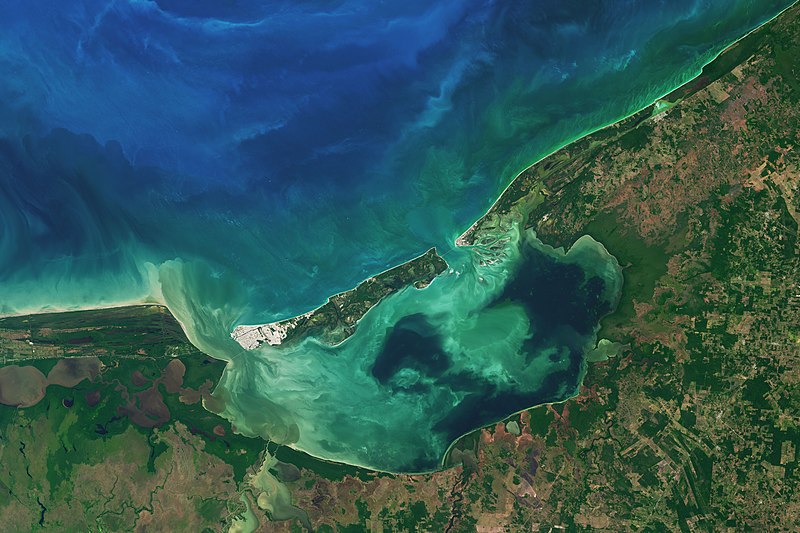Vaizdas:Laguna de Términos.jpeg
Appearance

Šios peržiūros dydis: 800 × 533 taškų. Kitos 6 rezoliucijos: 320 × 213 taškų | 640 × 427 taškų | 1 024 × 683 taškų | 1 280 × 853 taškų | 2 560 × 1 707 taškų | 8 797 × 5 865 taškų.
Didesnės raiškos iliustracija (8 797 × 5 865 taškų, rinkmenos dydis: 6,89 MiB, MIME tipas: image/jpeg)
Rinkmenos istorija
Paspauskite ant datos/laiko, kad pamatytumėte rinkmeną tokią, kokia ji buvo tuo metu.
| Data/Laikas | Miniatiūra | Matmenys | Naudotojas | Paaiškinimas | |
|---|---|---|---|---|---|
| dabartinis | 07:05, 12 kovo 2021 |  | 8 797 × 5 865 (6,89 MiB) | StellarHalo | {{Information |Description=Along the coast of southeast Mexico, in the state of Campeche, wetlands and rivers give way to a shallow, swirling body of water. At 2500 square kilometers, Laguna de Términos is Mexico’s largest coastal lagoon. By definition, coastal lagoons maintain a connection to the sea through a restricted inlet. At Laguna de Términos, the flow of water between the lagoon and the Campeche Sound is impeded by Isla del Carmen, a 2.5-kilometer-wide barrier island. This arrangeme... |
Paveikslėlio naudojimas
Paveikslėlis yra naudojamas šiuose puslapiuose:
Visuotinis rinkmenos naudojimas
Ši rinkmena naudojama šiose viki svetainėse:
- Naudojama en.wikipedia.org
- Naudojama es.wikipedia.org
- Naudojama ja.wikipedia.org
- Naudojama ru.wikipedia.org
- Naudojama www.wikidata.org
- Naudojama zh.wikipedia.org



